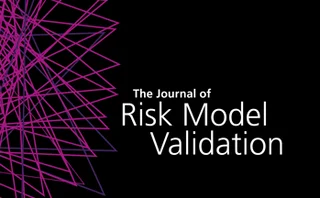Value-at-risk (VAR)
Q&A: Blue Star Energy Solutions’ John Wengler on risk
BlueStar Energy Solutions’ chief risk officer, John Wengler, speaks to Pauline McCallion about managing energy risk in the US power markets
Q&A: Endesa’s Jaime Roman on mergers
Jaime Roman, head of risk management at Spanish utility Endesa, talks to Katie Holliday about the attitudes to risk management in Europe from the perspective of a major European utility operating in the growing Iberian markets
Q&A: Mitsubishi UFJ Securities Holdings’s Akihiro Kawabe on transparency
Risk management in Asia is arguably more difficult to estimate as each country has very different regulatory requirements and political risk. Lianna Brinded speaks to Akihiro Kawabe, executive officer and general manager of the corporate risk management…
Quant Congress USA: Economist praises dynamic provisioning
Barclays Capital senior economist praises dynamic provisioning approach to loan losses
Sponsored Q&A: Valuation and transparency – Facing the challenges of risk and transparency
Why organisations need better risk management and transparency to adapt to the changing marketplace
Exclusive Kaminski Video: energy risk management challenges
The energy markets still face an unprecedented level of regulatory risk over the next year, as impending changes to the US financial system loom, while at the same time, BP’s Gulf of Mexico oil spill has presented major operational risk factors for the…
When market and credit risk collide
The financial crisis highlighted that interactions between market risk and credit risk could expose banks to greater risks than had been assumed. Banks are responding by altering their structure and the models they use – but it is by no means an easy…
Risk Europe: Operational risk key to enterprise risk management
Op risk should play a dominant role in the development of ERM, says Thomson Reuters’ Philippe Carrel
Sponsored statement: Strategies for success
A practical and holistic approach to stress testing in financial services
Cutting Edge: Measuring the risk of Financial Transmission Rights
In this month’s article, Ning Zhang proposes a semi-parametric approach to calculate the risk of FTRs/TCCs portfolios whose risk is hard to capture by using standard VaR methods. The major specialties of FTRs/TCCs – such as non-normality and seasonality …
Capturing fat tails
Financial institutions are more aware of the risks posed by high-impact events since the crisis, but the question is how to encapsulate these in models. Zari Rachev, Boryana Racheva-Iotova and Stoyan Stoyanov discuss three approaches for capturing fat…
Valid Assumptions Required: an analysis of VaR for energy markets
In this 10-part series, Brett Humphreys takes a fresh look at the widely used risk measure value-at-risk (VaR), urging risk managers to be more aware of the many assumptions that go into the calculation to produce the VaR number.
What does VAR mean in 2010?
Value-at-risk figures fell across the industry in 2009, while exceptions dropped significantly from levels in 2007 and 2008. But discussion over what VAR figures actually show and how the numbers are interpreted by senior management continues. By…
A sting in the tail
After recent financial turmoil, market participants are thinking much more rigorously about ways to protect themselves against the possibility of rare but extreme events. However, effectively hedging tail risk is not straightforward. By Mark Pengelly
Summing up VAR
There are a number of approaches to building the IT systems architecture required for historical simulation value-at-risk implementations. What are the pros and cons associated with these architectures? And why does the risk-aggregator approach overcome…
Pass the microphone: Humphreys to Strickland
In this new column, an industry professional interviews a market expert of their choice. Next month the interviewee becomes the interviewer and chooses who to interview. The series is kicked off by Brett Humphreys putting his questions to Lacima Group’s…
Consultants’ outlook: 2010 Expert views
Energy Risk convened representatives from Ernst & Young, MRE Consulting, Sapient, The Structure Group and SunGard Consulting Services to discuss a number of topics on the outlook for 2010, including new regulation, future market developments, credit and…
Modest means
Credit loss models typically calibrate default separate from loss given default. Here, Jon Frye calibrates simultaneously, using credit loss data. This produces a surprising test result: the credit loss models do not significantly outperform a…















